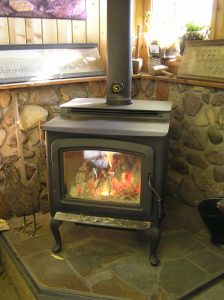 Scott Sanford, Rural Energy Program Outreach Specialist
Scott Sanford, Rural Energy Program Outreach Specialist
Biological Systems Engineering
University of Wisconsin-Madison Division of Extension
College of Agricultural and Life Sciences
sasanford@wisc.edu
(608) 262-5062
Total Time: 4:17
0:12 – What we should think about when comparing fuel
0:42 – Choosing a device
1:06 – Safety when dealing with fuels
1:40 – Codes and regulations
2:03 – Dangers associated with choosing the wrong fuel
3:02 – More information and publications
4:07 – Lead out
Transcript:
Adam Wigger: We’re talking today with Scott Sandford, Extension Outreach Specialist, University Wisconsin Madison Divison of Extension, and the College of Agricultural and Life Sciences, and I’m Adam Wigger. Scott as we’re coming up on the colder season what do we need to think about when comparing heating fuels?
Scott Sanford: Well if somebody wants to change fuels from one source the other, it’s not just a straight gallons for gallons, because they all have different energy contents. So, the likely one is that people want to go from say heating oil or propane to wood and it’s going to depend on the type of wood you use to the energy content that you’ll get out of it. And also the efficiency of the appliance, whether it’s a fireplace or a heat wood stove or a furnace.
Adam Wigger: Absolutely. So what do we need to think about when we’re choosing a device?
Scott Sanford: Well one is if its going to fit your needs. So if you go to wood you have to remember it’s going to have to be stoked on a regular basis. You have to fill it up with what you’ve got to get a wood supply or cut your own. So you have to have time and equipment and stamina to do it.
Adam Wigger: Fair enough. What kind of safety things do we need to worry about when dealing with these kinds of things?
Scott Sanford: Well with wood there’s code requirements for installing a wood burning device. So that’s important because if you get a spark or something it can cause a fire. If you’re using a gas appliance like, natural gas or propane, the biggest safety thing is that there’s no leaks in the pipes, and if you smell gas you get out and call for help because we can have an explosion similar to what happened up in Sun Prairie a year ago.
Adam Wigger: Absolutely. Where can we find some of those codes or regulations for wood burning?
Scott Sanford: Well most of time if you’re going to put a wood burning stove in you’re going to have to have a building permit, and the building inspector can help you with what those code requirements are. It’s going to be a little different depending on where it goes, what type of building, and the municipalities may have different requirements.
Adam Wigger: Absolutely. Are there any dangers associated with choosing the wrong type of fuel or using would that you shouldn’t be using?
Scott Sanford: Well the biggest challenge is with wood is getting dry wood, because if you have wet wood it’s not going burn very well. It’s going to smoke and you’re going to probably have neighborly complaints. There’s not not a wrong or right energy source, it’s more of what you feel comfortable with and what’s economical. Natural gas is going to be the cheapest source. But not everybody has natural gas available. Propane is probably the next cheapest. Wood is somewhere in there, depending on how much you pay for the wood. Some people think wood is free, but it’s not. They have to spend the time to cut it and split and dry it, or you have to buy it. Heating oils could be the most expensive of the liquid fuels and then electric of course is going to be the most expensive.
Adam Wigger: What resources are available for people looking for more information like this? You’ve got a publication, right?
Scott Sanford: Yes there is an Extension publication on comparing energy sources. It’s on the learning store web site and you can look it up find it up there if you look at it. Put in “energy” and “comparing” and maybe “Sanford” as an author and you should be able find it. So there’s also a Web site. It’s wisconsinwoodenergy.org that also has information on using wood energy. And then there’s also a – I have Web site on energy-use itself. Various aspects of energy efficiency and stuff. And actually I should point out that energy efficiency is often more cost effective in changing energy sources to begin with. So, you know changing lights, new furnace, etc. Those often have a better payback, a return on investment, than switching to wood energy or some alternative energy source.
Adam Wigger: Awesome. We’ve been visiting today with Scott Sandford, Extension Outreach Specialist, University Wisconsin Madison Division of Extension, and the College of Agricultural and Life Sciences, and I’m Adam Wigger.



